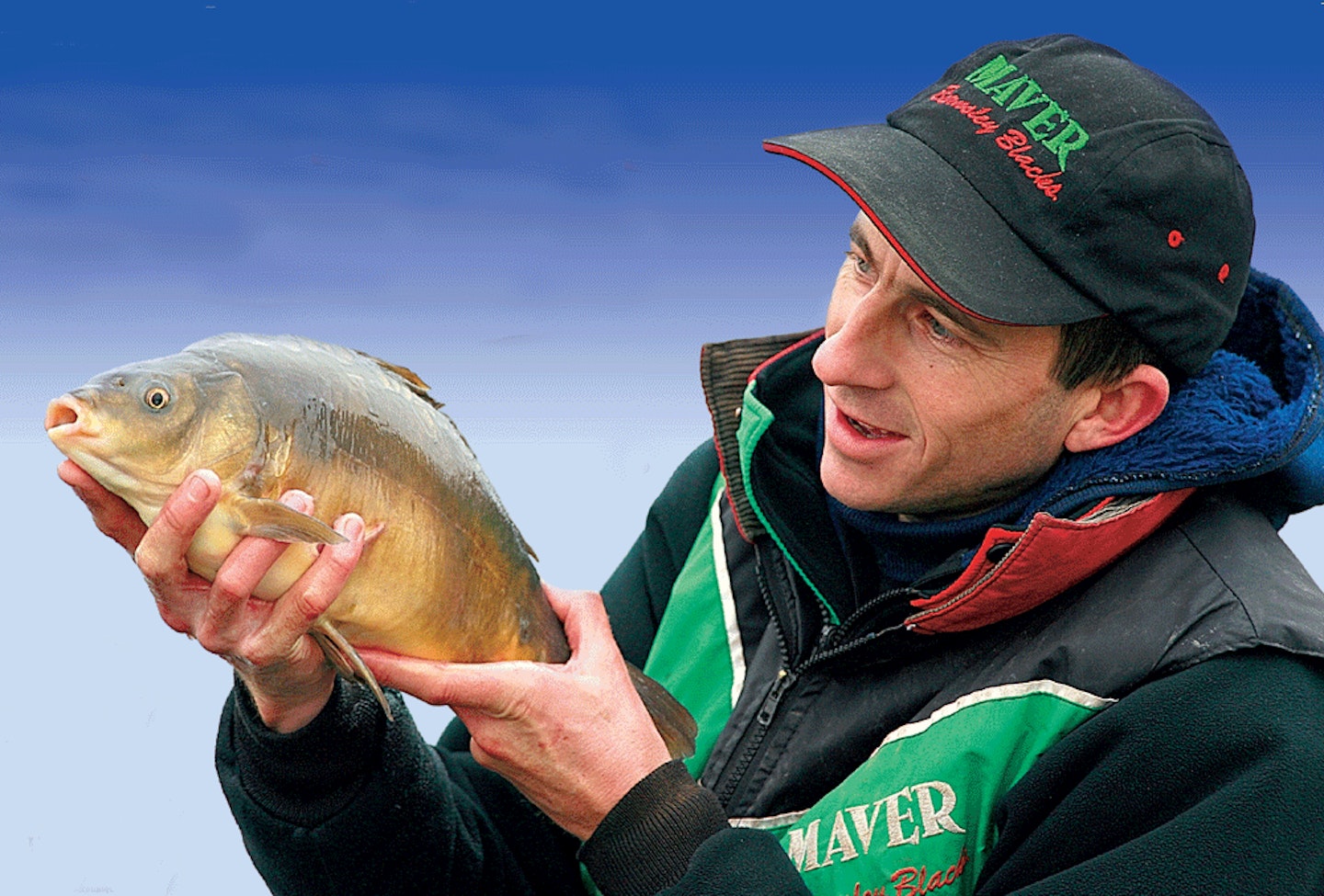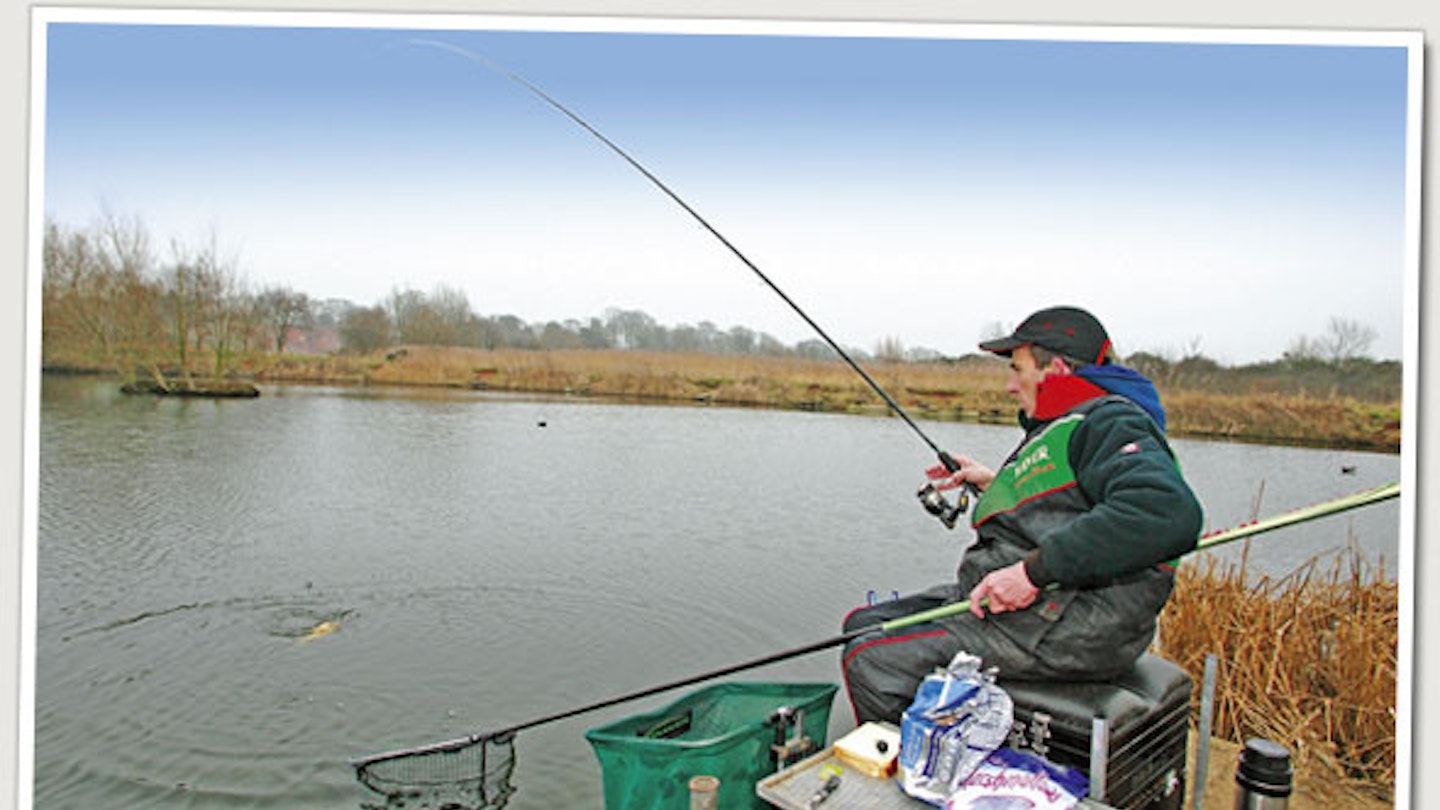“Bread… who the hell still uses that?” is the reaction you will get from most anglers these days. But bread is STILL is one of the best angling baits that you can use.
These days it’s sadly relegated to the back of the bait tray, branded by many anglers as old fashioned and just plain boring.
Nothing could be further from the truth.
Bread will catch virtually every species of fish that swims, whether they have been heavily fished for or not.
From the smallest roach to the biggest carp, they all have a fatal attraction to it.
In order to put bread firmly back on the angling bait map, we met up with Maver sponsored angler, Andy Kinder.
Not just a superb individual angler, Andy is also a regular team member with the prolific match-fishing team, Barnsley Blacks. An accolade not to be taken lightly!
We joined Andy for a pleasure session where he planned to show us a few tips and tricks when feeder fishing bread for commercial carp…
Every five minutes saw another bread-filled feeder clattering into the water with pinpoint accuracy, two rod lengths away from an island in Andy’s swim. The spot was preordained because as Andy was setting up, a large carp crashed out of the water in the very area his feeder now kept hitting.
It would only be a matter of time. After sinking the line and winding the reel very slowly to put a slight bend in his quivertip, Andy sat back and waited.
The first signs of fish were a couple of trembles on the rod, moments later it sprung round and Andy struck.
The water temperature was still very low so the carp put up much less resistance than it would in summer.
The fight was one-way, ending in the soft mesh of Andy’s landing net a couple of
minutes later. The result was a fine-looking mirror carp of around 3lb. Hopefully, it was the first of many.
WHY USE BREAD FOR TARGETING CARP?
Bread is one of the all time classic baits that will catch nearly every species that swims, although carp have a real love of the stuff. But why is it so good?
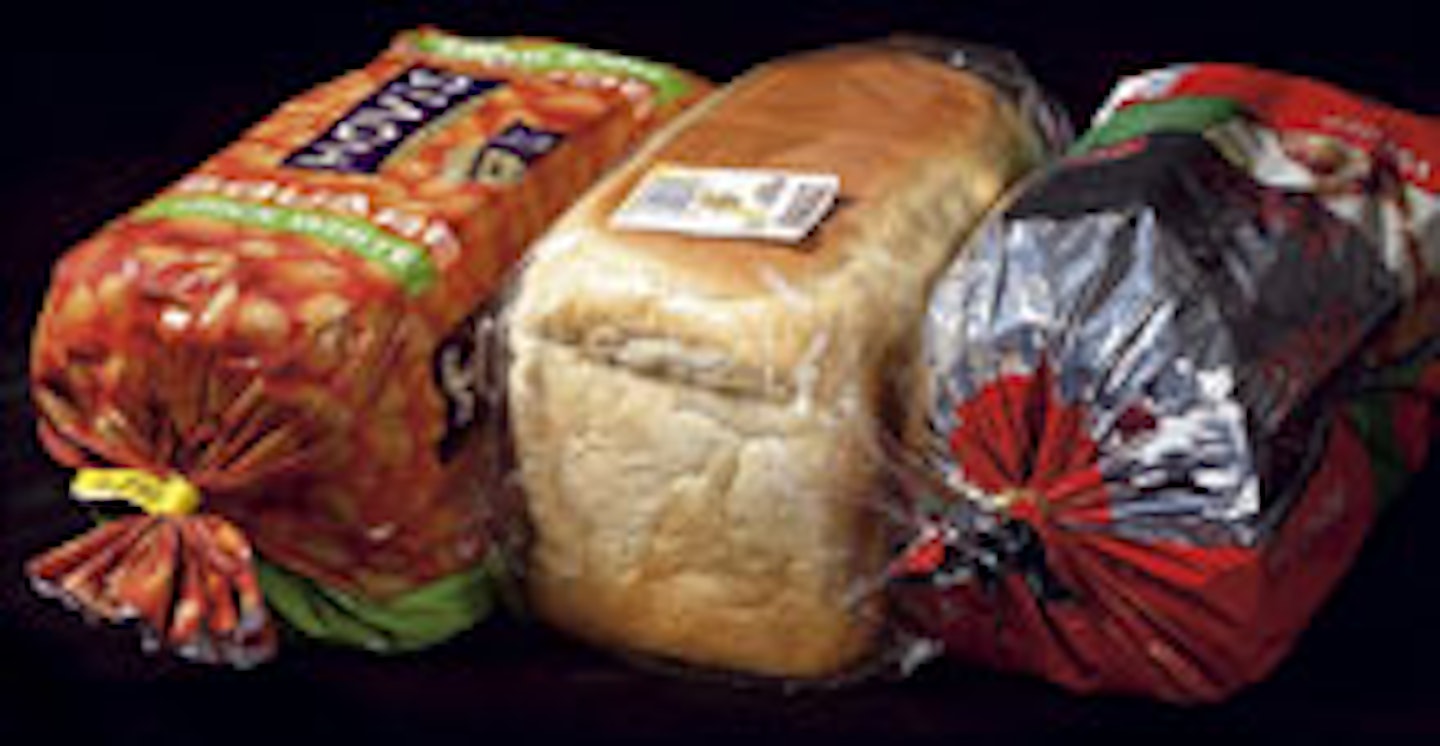
There are a number of reasons. Firstly, being bright white, it is an extremely visible bait and something that the carp will home in on very quickly.
Secondly, it is very cheap and readily available in every shop in the land.
Another advantage of the common loaf is its versatility. There are many things you can do with bread.
You can use a punched pellet or large chunk of flake on the hook. It can be liquidised or mashed into a lovely groundbait. Bread can even be coloured, flavoured or fished in conjunction with other baits such as maggot, caster, worm or corn.
These latter bait mixtures are know as cocktail baits and are much loved by carp, tench and bream.
A fourth benefit is it becomes waterlogged and fluffs up, helping to mask the hook as soon as it enters the water.
Andy told us: “My favourite type of bread is the cheap, white long-life variety. Longlife loaves are much stickier and tackier than other breads.
This allows it to hold on to the hook better, particularly when fishing bread flake.”
PREPARING YOUR BREAD
In the warmer months, when you’re looking to catch a big weight on the feeder, you need to prepare a fair amount of liquidised bread to fill your swimfeeder with. Andy thinks nothing of liquidising three or more full loaves for a days fishing. The other little tip that he uses to great effect when targeting carp is to leave the crusts on each slice.
This keeps the bait quite active as some of the particles will sink and some will rise creating a column of bread particles. Not only will this help to pull fish down from the upper layers of the water but it also creates a kind of mini snow dome on the lake bed, with loads of bread fragments colouring the water around your hookbait. When the carp comes into the swim looking for food, the only substantial morsel it will find is your hookbait.
“The other advantage of leaving the crusts in your liquidised crumb is it allows you to experiment with hookbait presentation,” said Andy. “Because there is a column of bread particles rising and falling in the swim, you can try fishing hard on the bottom or pop your bait up in order to see which gains you more bites through the day.
“The most important thing when fishing with bread is to keep the feed going in so that you create an active feed area. By casting every five minutes you generate a cloud of feed for the fish to investigate, with only your hookbait in the middle.”
When it comes to liquidising his bread for the feeder, Andy is a bit of a traditionalist as he only uses plain bread (above).
By blitzing a few slices of bread at a time in a food processor you create a fantastic groundbait made up of millions of tiny bread particles.
The best bread to use is a cheap, white processed loaf. The inherent moisture in this product helps to hold the particles together when squeezed into a ball or a feeder. However, once the ball or the feeder hits the water, the bread will immediately break up, shattering into thousands of tiny bits of bread, laying down a lovely carpet of edible morsels for the fish to pick over.
Alternatively, a pre-prepared, shopbought, coarse white crumb (see page 111) is also available called Punch Crumb.
To boost his Punch Crumb Andy adds a little flavouring, his favourite additive being Van Den Eynde Liquid Super Scopex.
“This is a product that’s been designed as a groundbait additive and not a pure flavour so it’s difficult to add too much,” Andy explained. “To use it with my Punch Crumb, I add the flavour to the mixing water. This enables the finished groundbait to have a more consistent flavouring level than if I added it later.”
The other little tip that Andy employs is to add a little Van Den Eynde Dynamic Feeder groundbait at a ratio of four to one.
“Dynamic Feeder is more of a silverfish additive really,” said Andy. “But when the carp are cruising midwater, the activity of the groundbait can really help to pull the carp into the swim, it’s ideal when I’m fishing with a popped-up bait.”
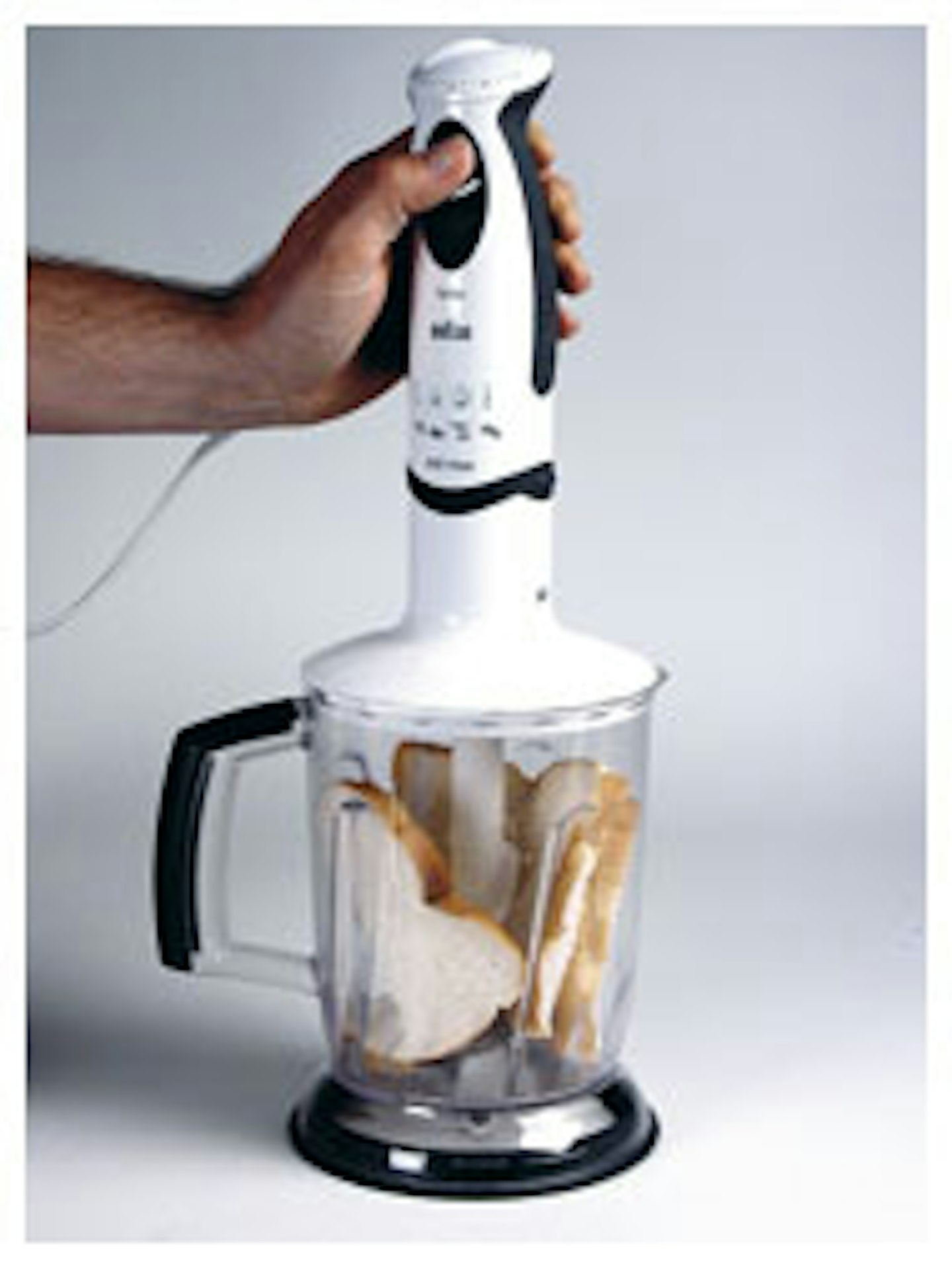
1 Start by placing three or four pieces of sliced bread into a liquidiser.
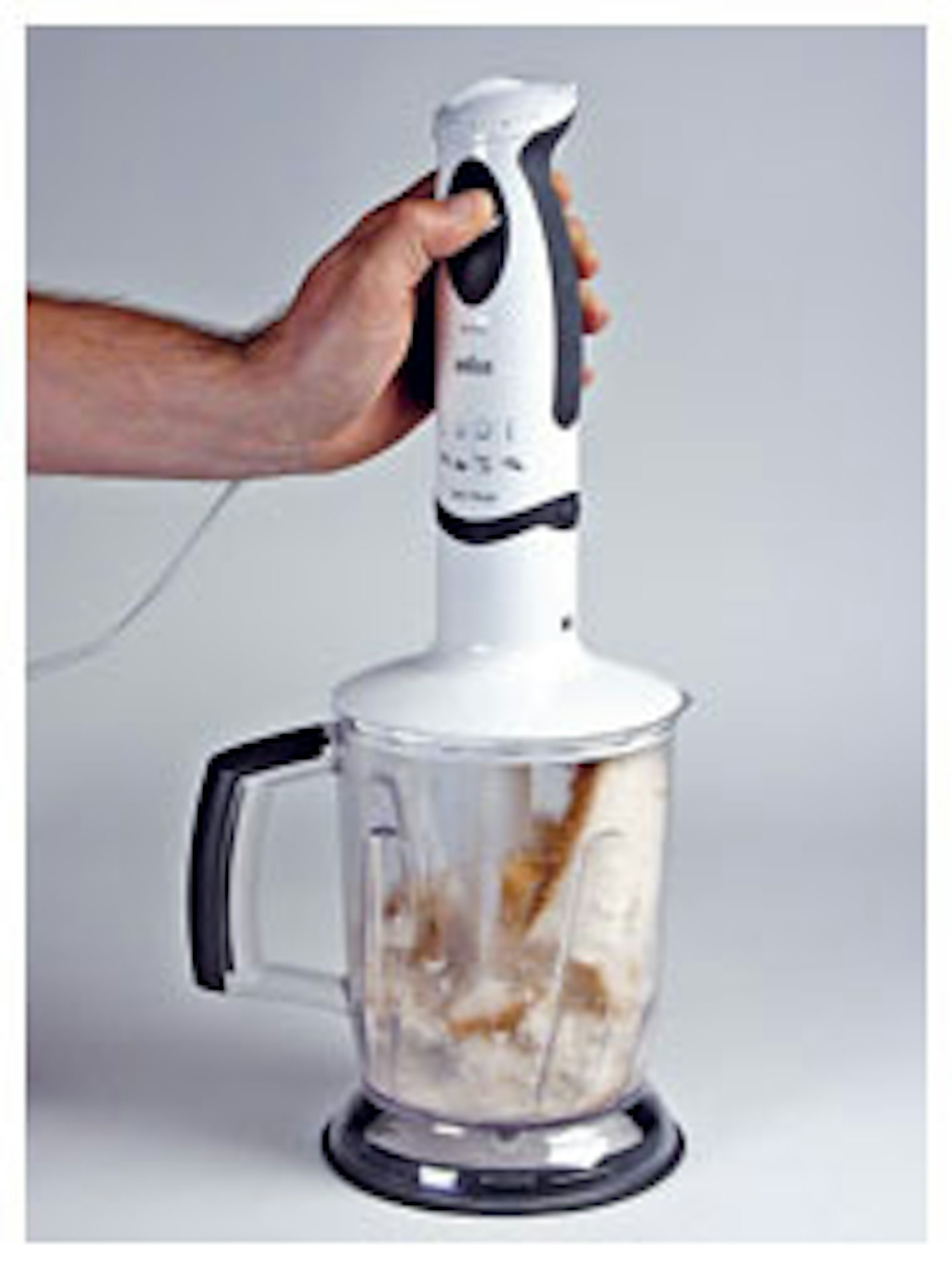
2 Give the bread slices a few short blasts with the liquidiser to break the large slices down.
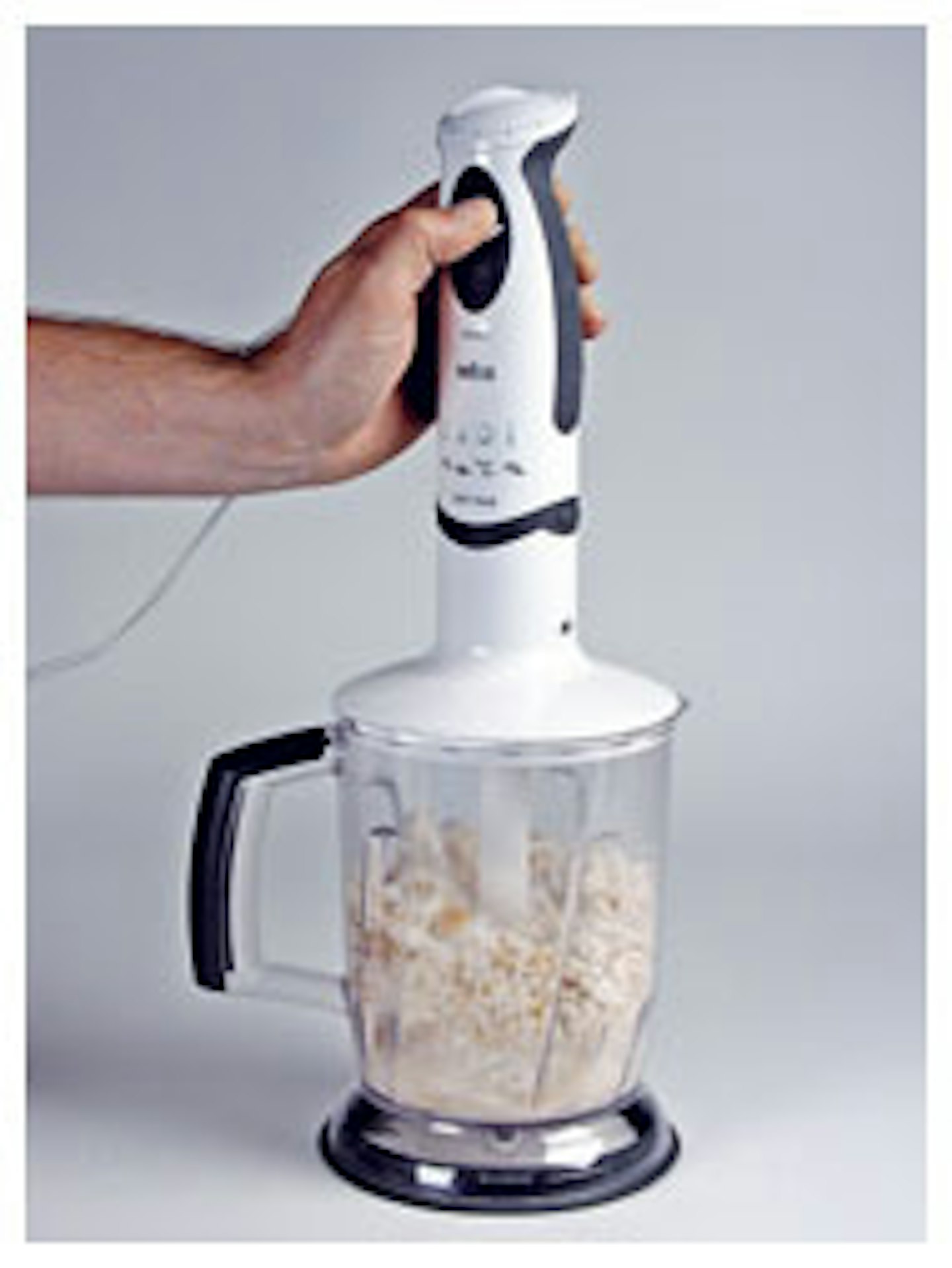
3 Give the liquidiser a shake and then re blast for about 30 to 40 seconds.
.jpg?auto=format&w=1440&q=80)
L4.jpg
4 Don’t obliterate the bread, you should be looking to turn it into a fluffy mix containing bits of crust.
HOW ANDY HOOKS HIS PUNCHED BREAD
A lot of anglers avoid using bread on the hook as they think it comes off too easily. Andy gets around this problem by punching out pellets of bread, then hair-rigging them on to the rig.
Andy takes three slices of processed bread and places them on a hard surface. He then uses a Maver ‘Match This’ Bait Punch in order to press out a small barrel of bread. This is then slid on to the hair before casting in.
“The reason I use three slices, rather than just one is that it makes a good-sized pellet, good for attracting the attentions of any passing carp and once the punch takes on water it will expand, masking the hook. This provides me with a better presentation,” Andy explained.
ANDY’S FEEDER RIG
breadrig.jpg
Andy’s rig for the day was set up running style.
The feeder that Andy chose for the day was a medium 20-gram cage feeder, ideal for targeting carp as it provides a reasonable payload without overfeeding the swim. If he gets a lot of bites, Andy will increase the size of his feeder, however, if the fish are hard to come by he will fish with just a leger bomb.
During today’s session, the carp were not ‘having it’. The previous snap of cold weather had really turned the carp off.
After making a few casts at the start of the day, Andy had an early fish. This lulled him into a false sense of security as it was the last bite he had for a couple of hours. By ringing the changes, putting out less bait and popping the hookbait up, Andy again managed to wheedle out another pair of carp.
At the end of a difficult day, Andy’s bread attack had managed to put fish in the net whilst others blanked!
The liquidised bread test: What should happen to your feed...
The liquidised bread test: What should happen to your feed...
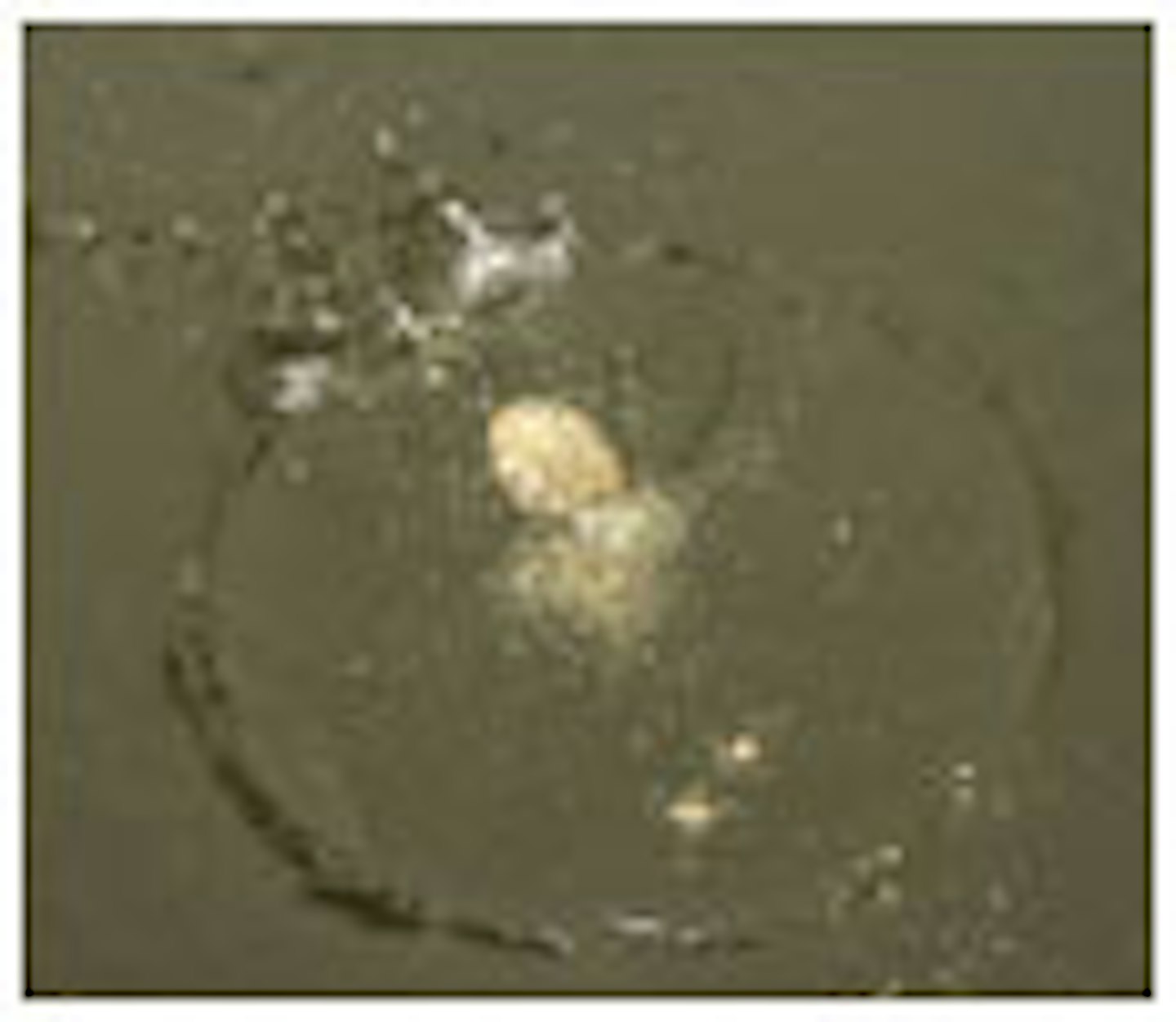 1 of 5
1 of 5The liquidised bread test: What should happen to your feed...
 2 of 5
2 of 5The liquidised bread test: What should happen to your feed...
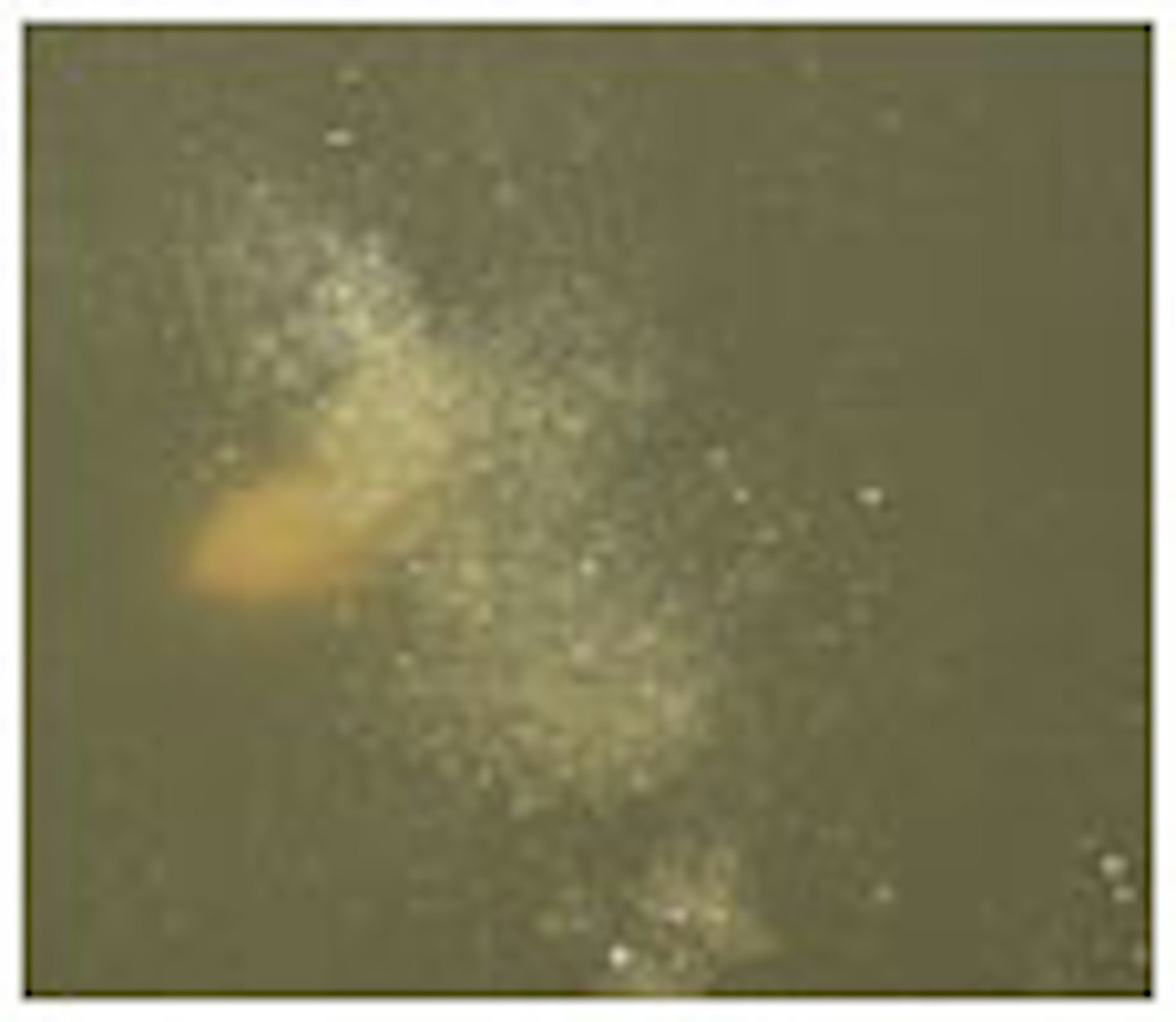 3 of 5
3 of 5The liquidised bread test: What should happen to your feed...
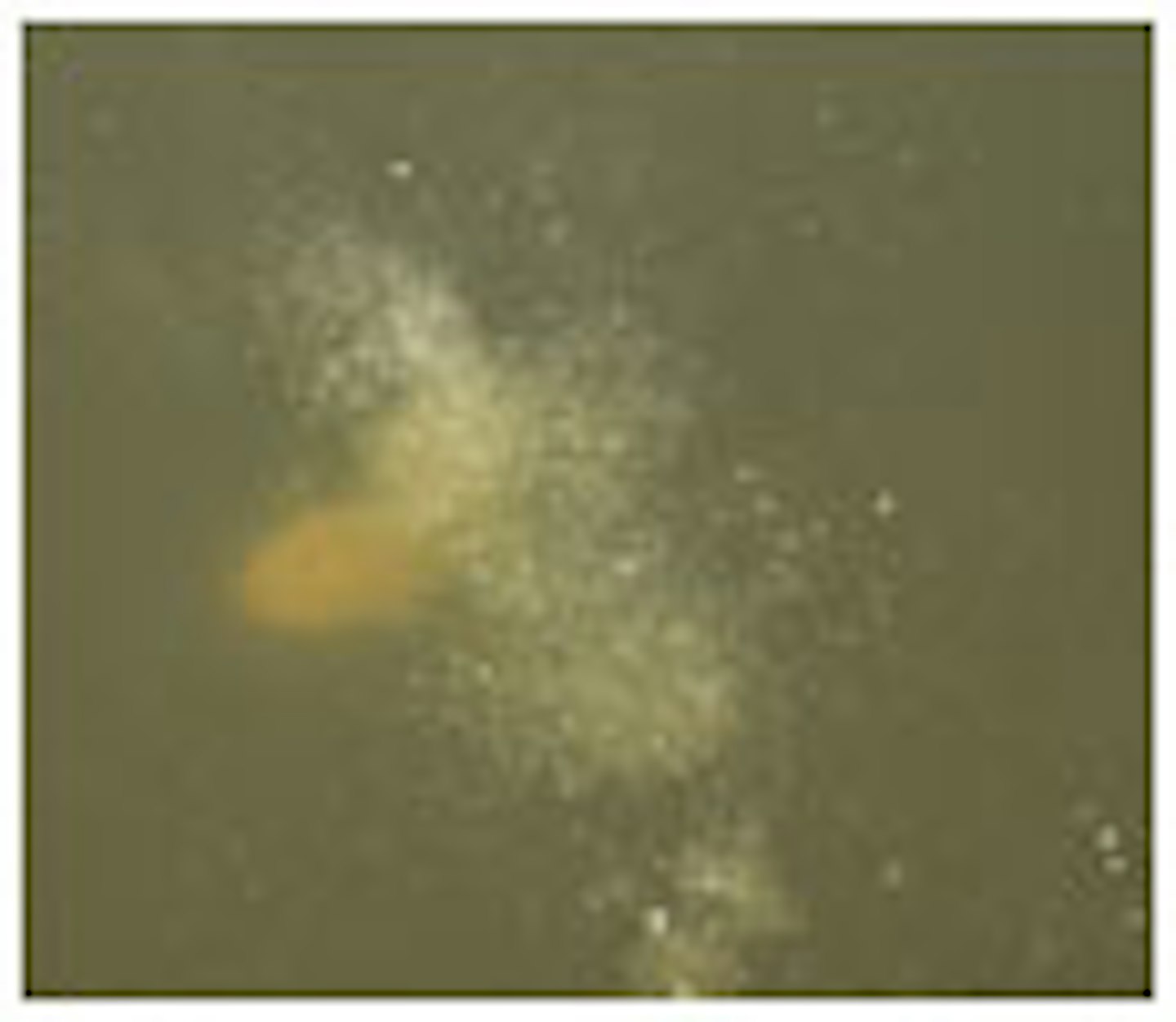 4 of 5
4 of 5The liquidised bread test: What should happen to your feed...
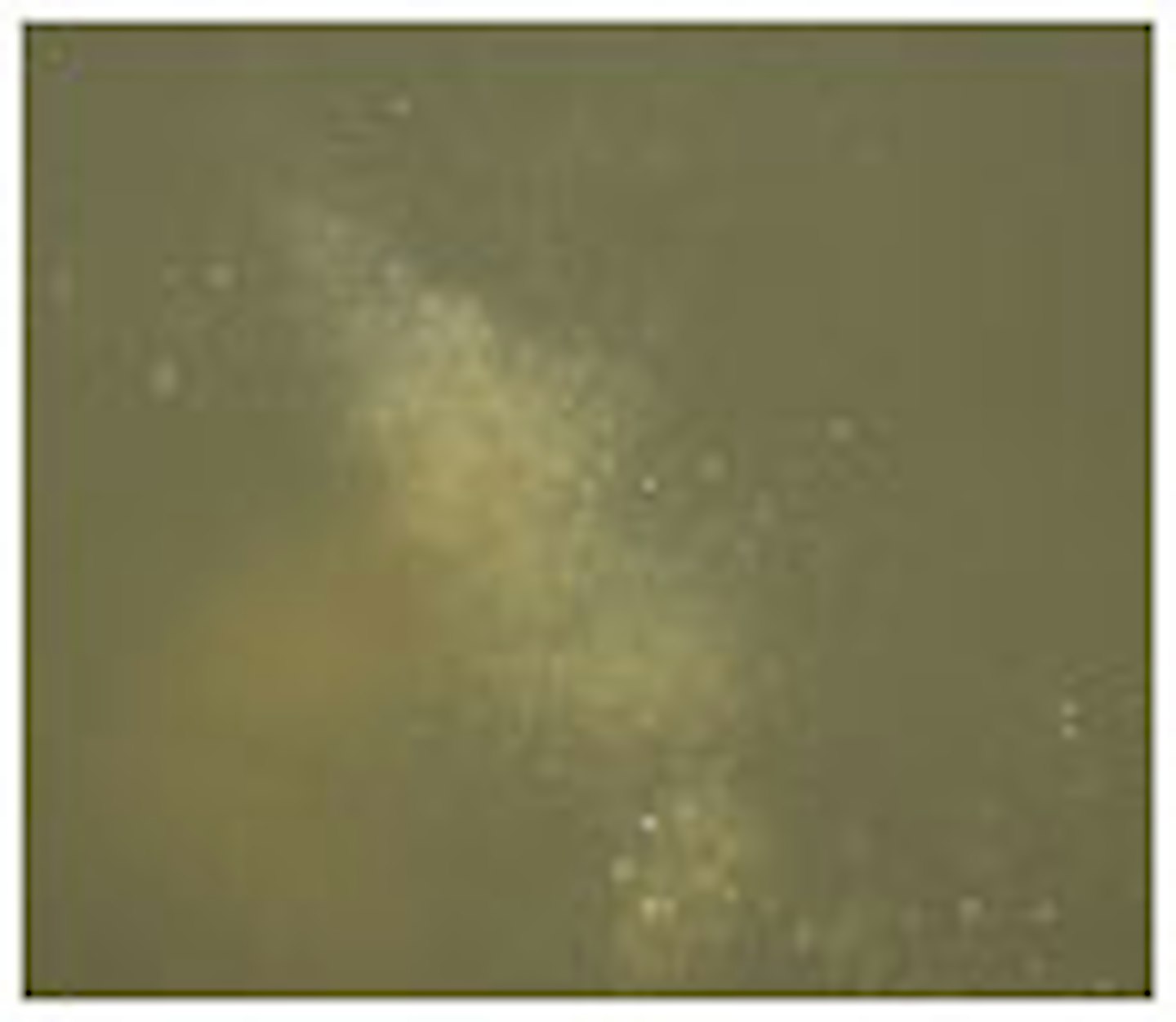 5 of 5
5 of 5The liquidised bread test: What should happen to your feed...
T1.jpg
T2.jpg
T3.jpg
T4.jpg
T5.jpg
1 SECOND...
The punch crumb ball hits the water and floats.
2 SECONDS...
The ball should still float but slowly start to break up.
3 SECONDS...
The ball of punch should now start to sink, very slowly.
5 SECONDS...
The ball continues to break up as it slowly decends.
7 SECONDS...
Most of the ball has broken up, leaving a cloud of bread crumb.
How to create bread punch barrel
How to create bread punch barrel
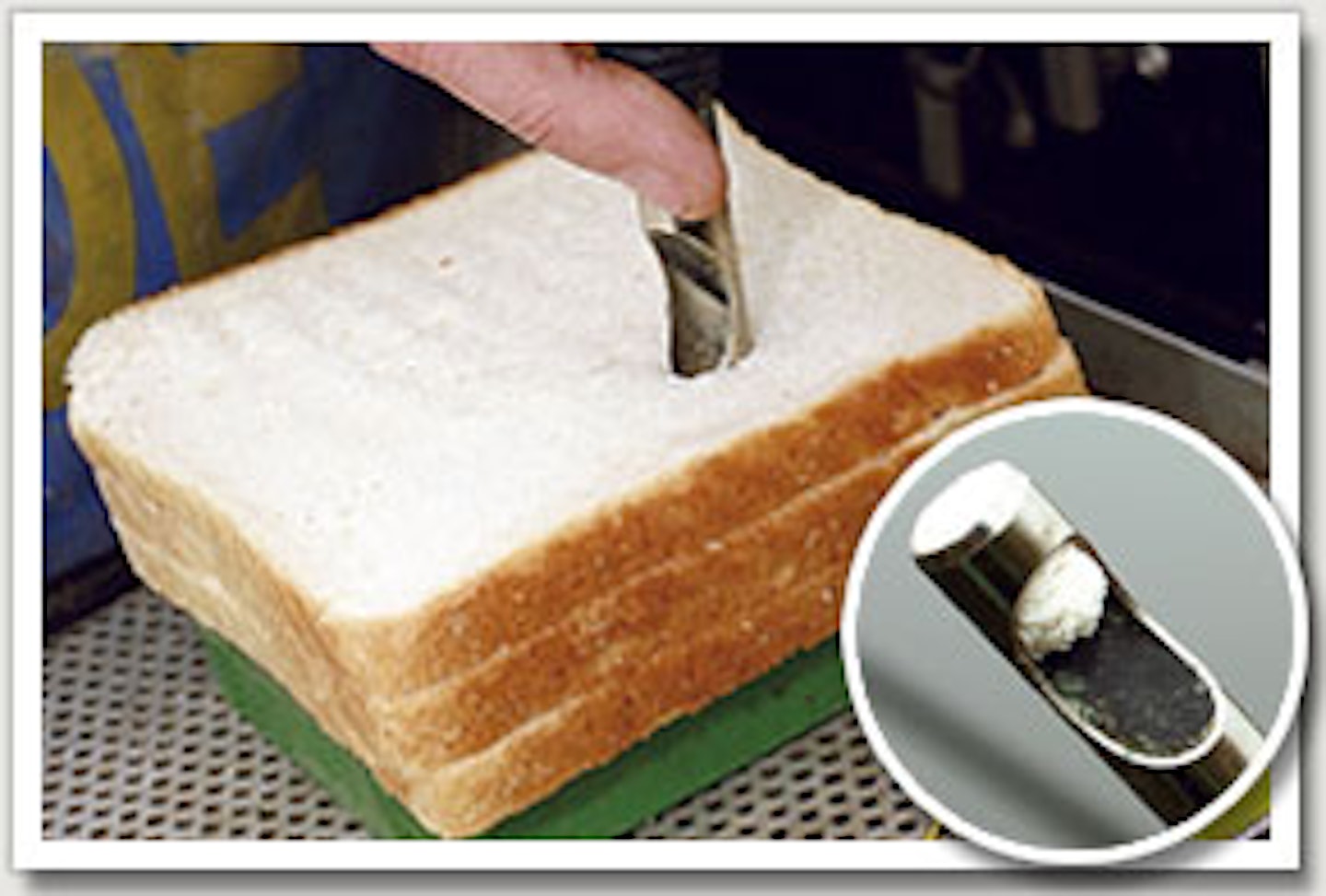 1 of 4
1 of 4How to create bread punch barrel
 2 of 4
2 of 4The liquidised bread test: What should happen to your feed...
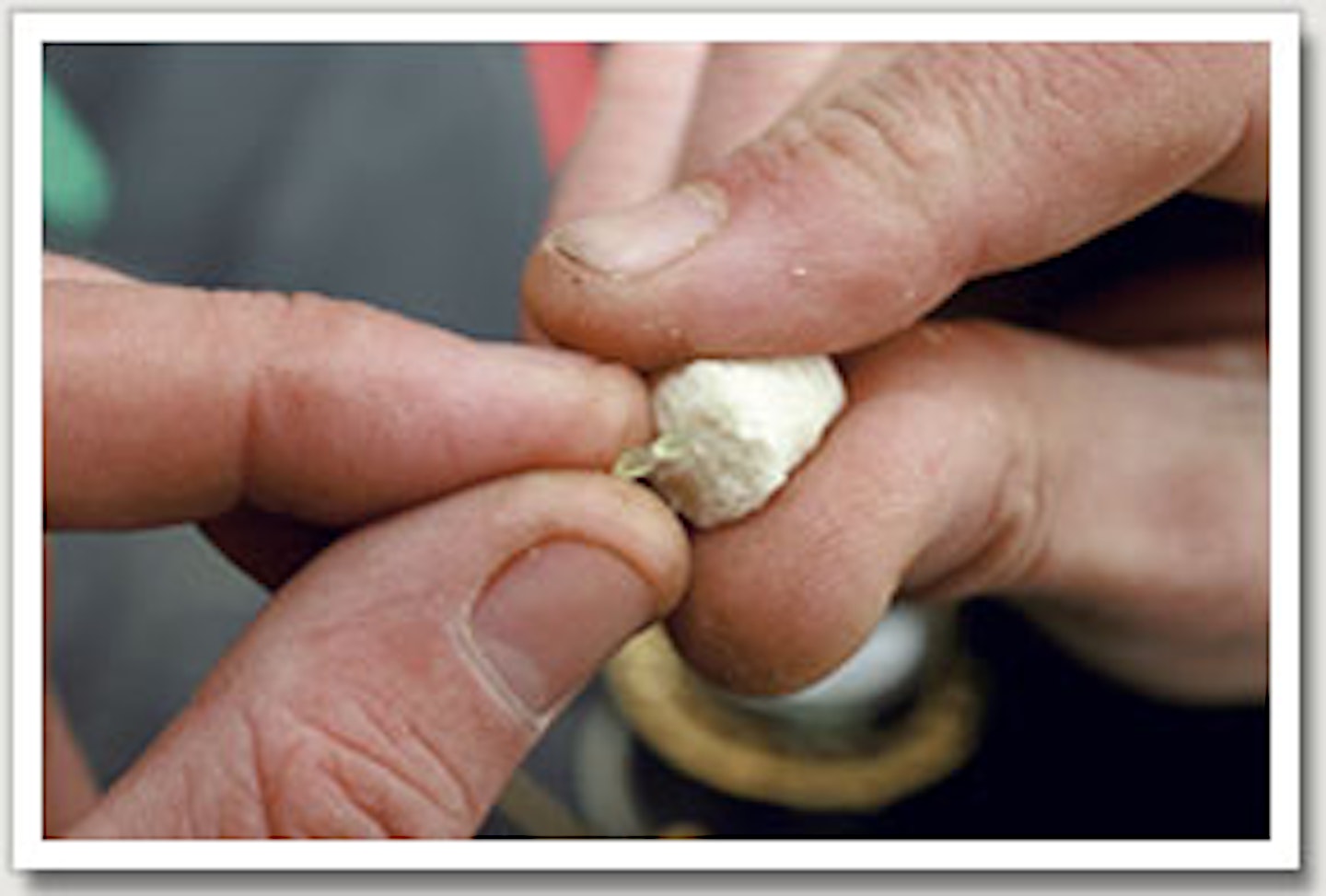 3 of 4
3 of 4How to create bread punch barrel
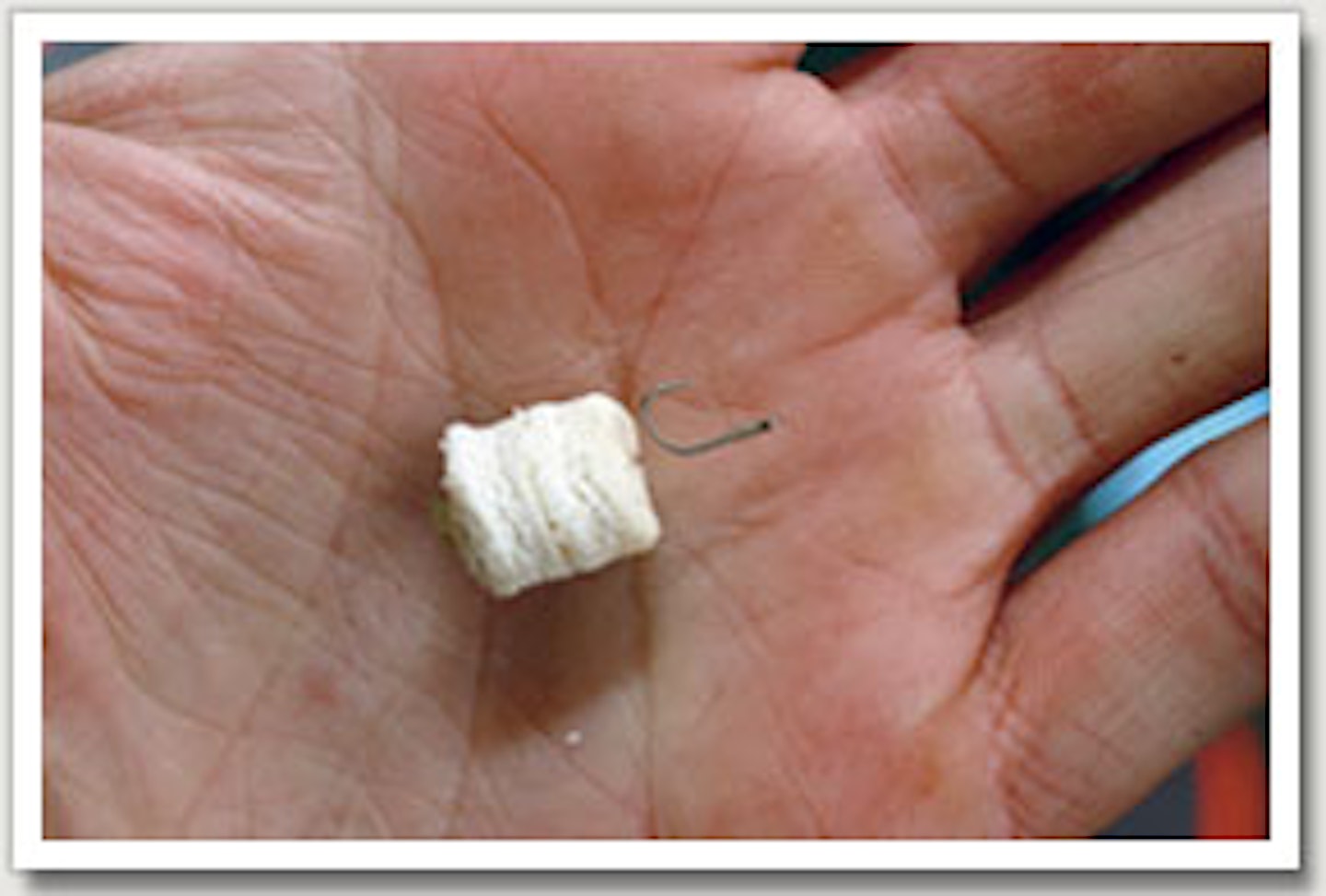 4 of 4
4 of 4How to create bread punch barrel
1 Place three slices of bread on top of each other, then place them onto a hard surface. Punch out a bread barrel with a Maver Match This Bait punch.
2 Using a fine baiting needle, remove the bread punch barrel from the bait punch and hook the needle over the loop of the rig’s hair.
3 Carefully slide the bread barrel off the needle and onto the hair of the rig. Lock the bread in place with a bait stop.
4 The finished baited rig should look like this, with the bread barrel hanging just below the hook.
Alternative bread-based hookbaits
Alternative bread-based hookbaits
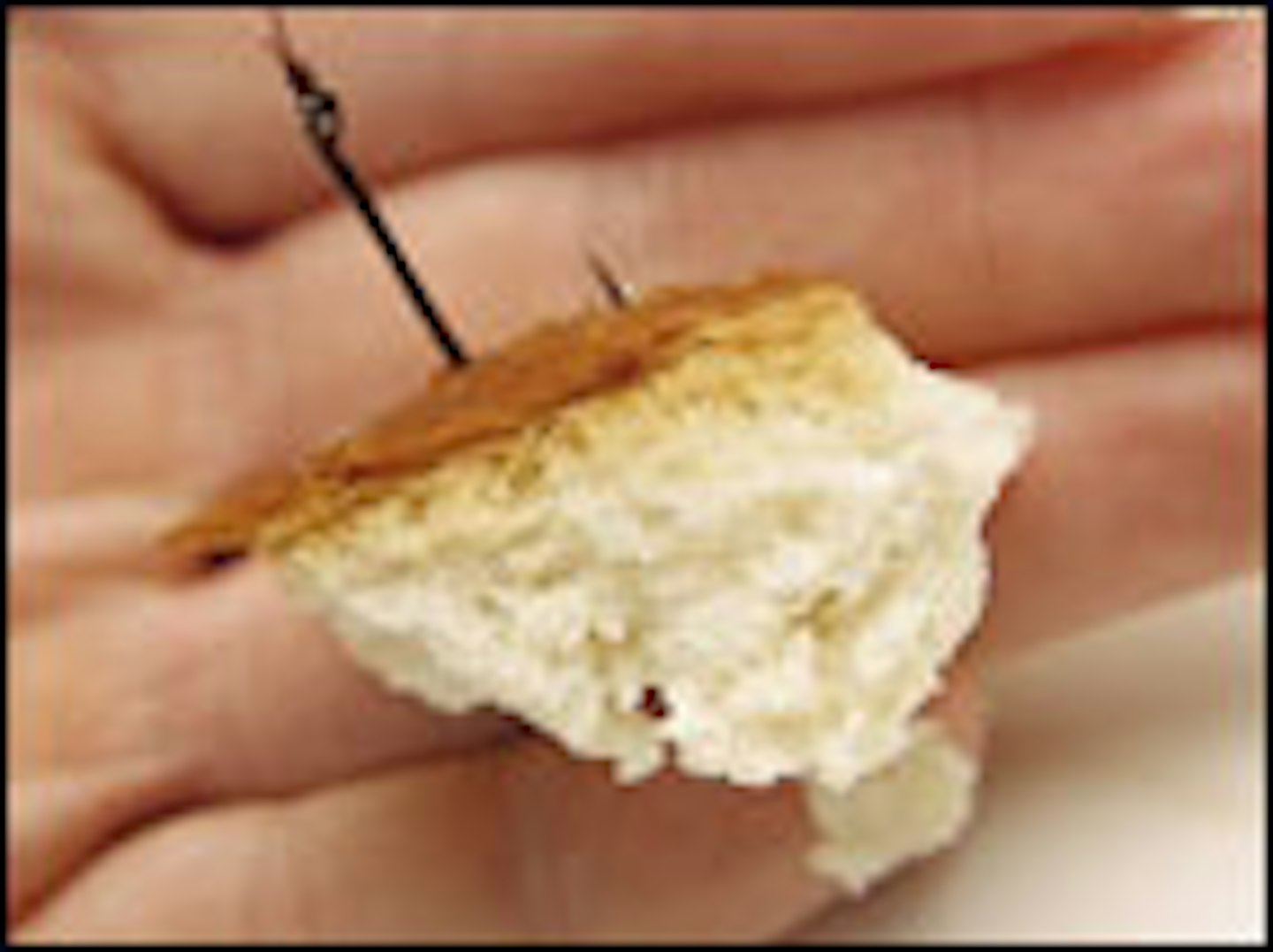 1 of 5
1 of 5Alternative bread-based hookbaits
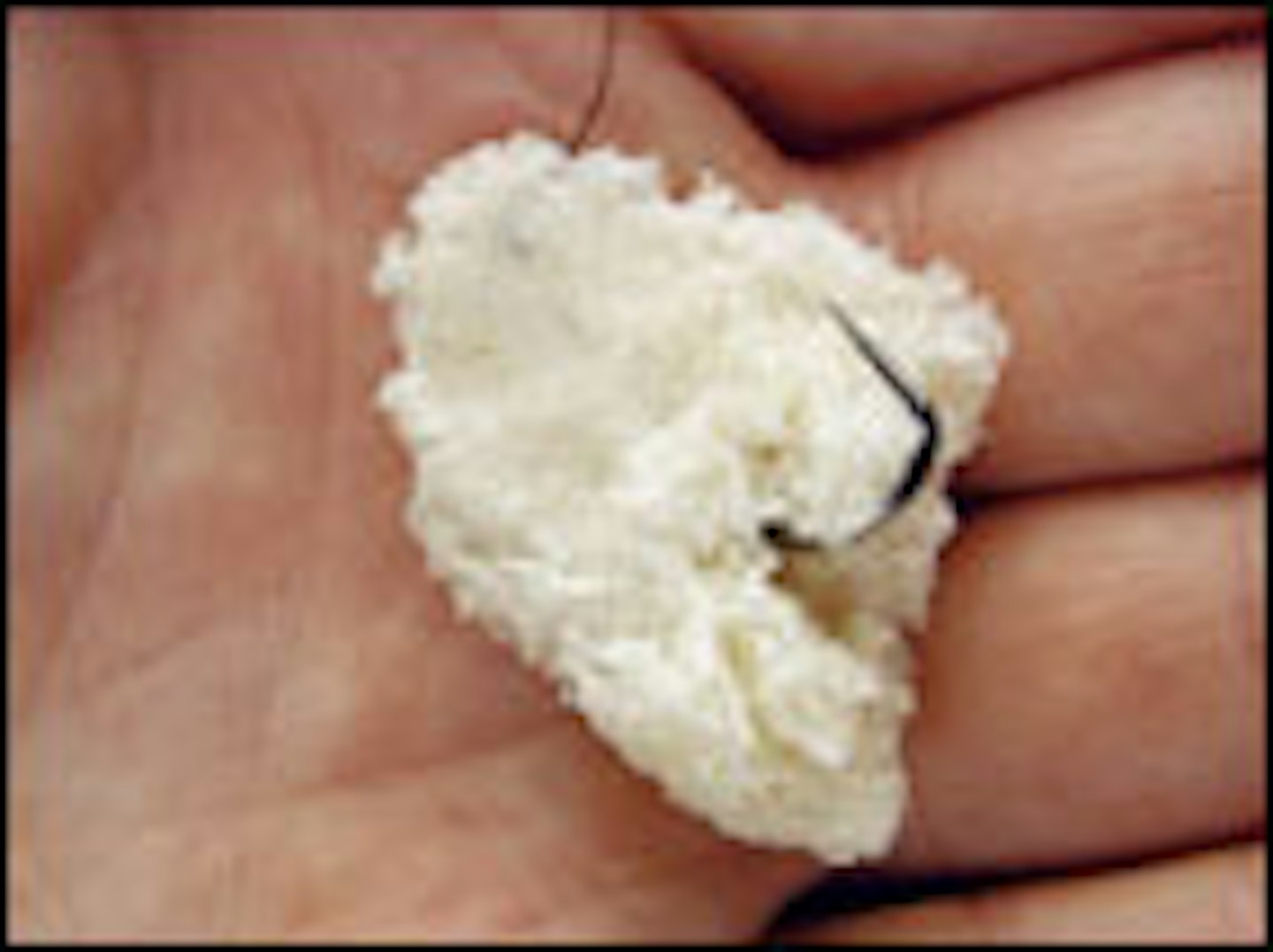 2 of 5
2 of 5Alternative bread-based hookbaits
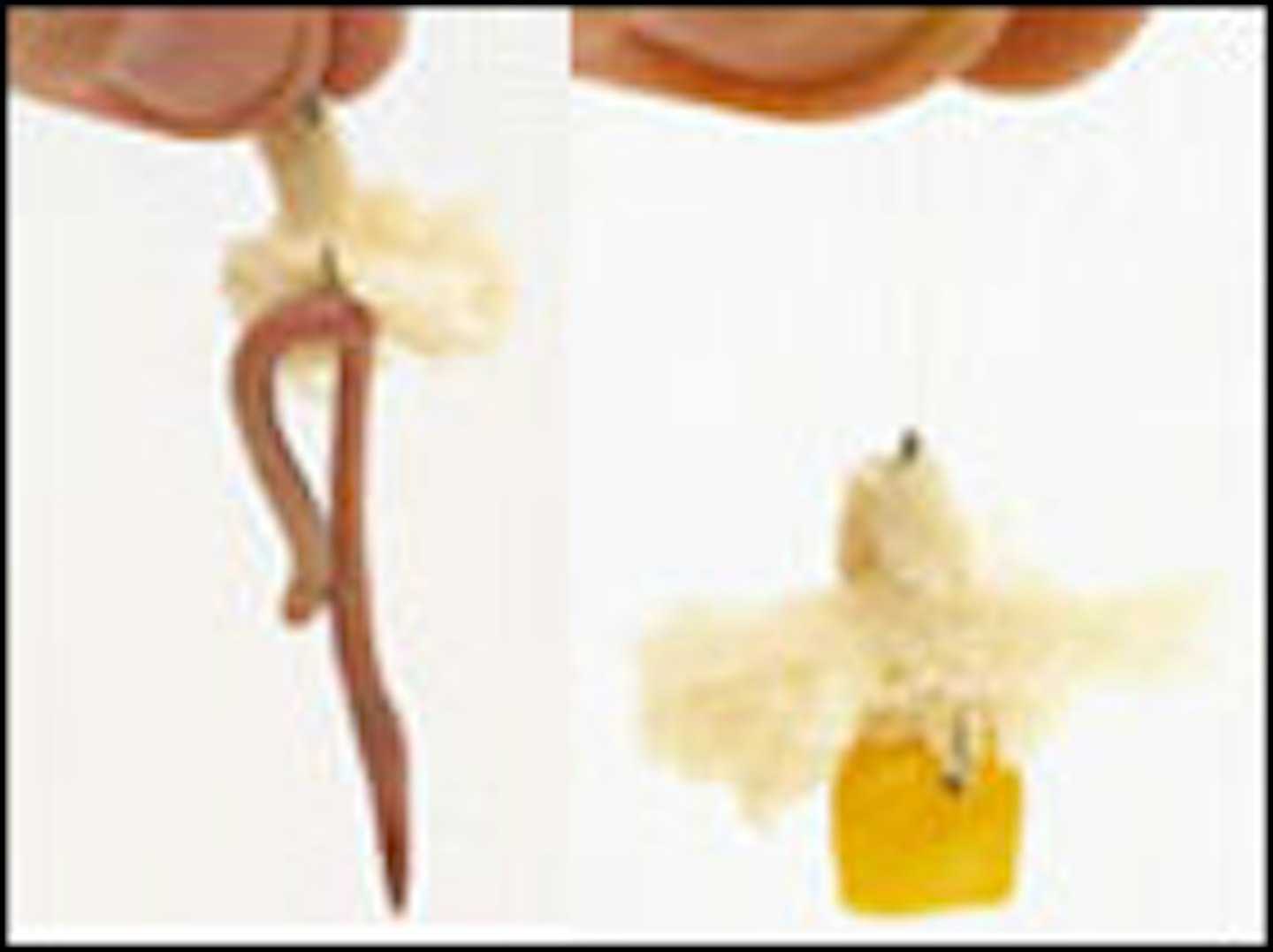 3 of 5
3 of 5Alternative bread-based hookbaits
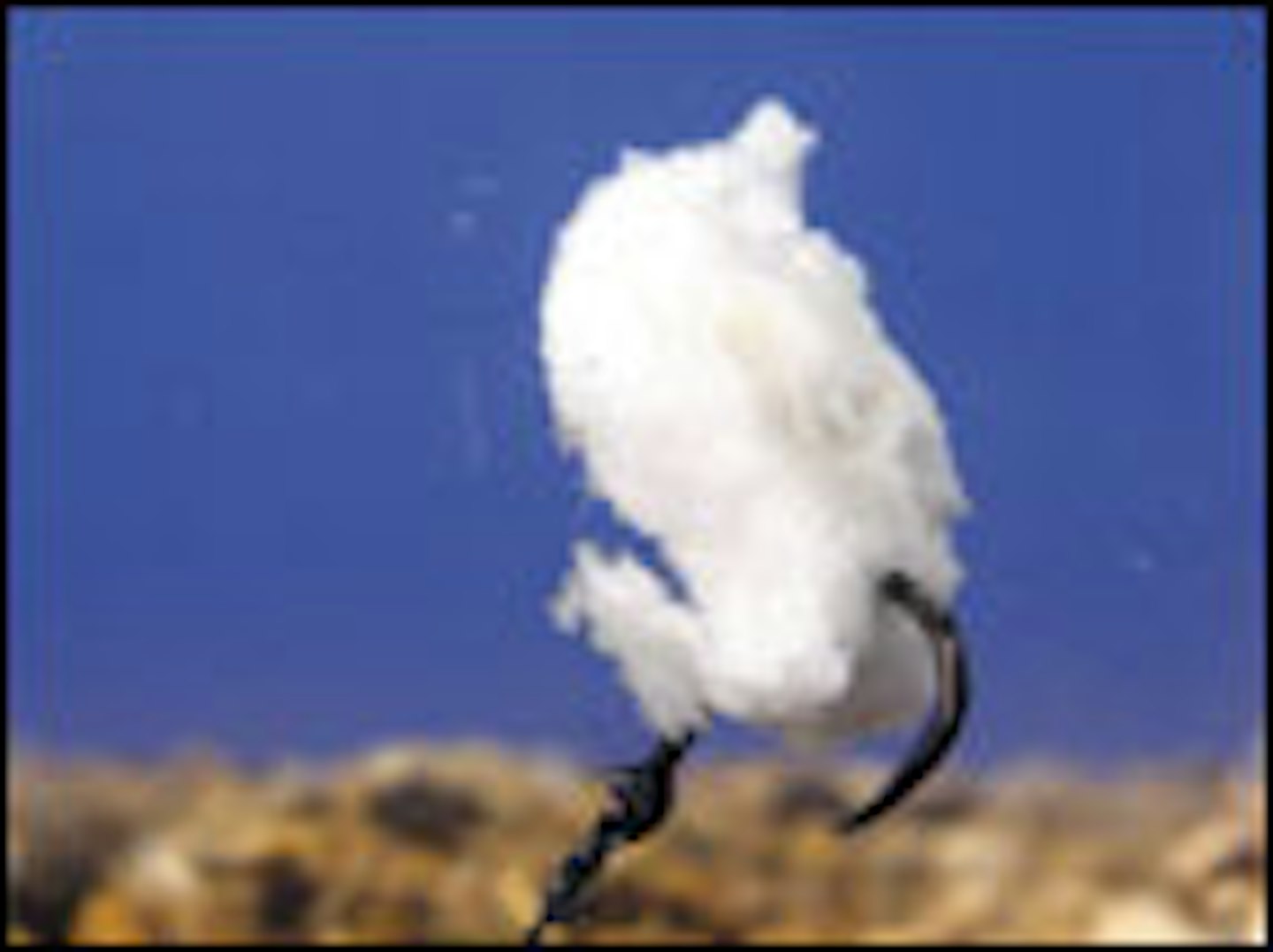 4 of 5
4 of 5Alternative bread-based hookbaits
 5 of 5
5 of 5The liquidised bread test: What should happen to your feed...
CRUST
Crust tends to be used when targeting larger carp. As bread crust is buoyant, the best way to fish with it is either on the surface or when you are looking to fish a popped-up bait. An uncut loaf provides the best crust. In order to prepare the crust for the hook, leave an uncut loaf in a polythene bag for a couple of days. This allows it to sweat producing a tough, rubbery crust that will stay on the hook much longer.
FLAKE
This is one of the most widely used of the bread baits. You can use a sliced loaf for bread flake, but the soft doughy inner of an uncut loaf makes by far the best bread flake. In order to mount bread flake, simply tear off a piece about the size of a fifty pence piece. The bait should be pinched around the shank only, but not compressed too much. In the water you want the flake to swell up and look as natural and as fluffy as possible.
COCKTAILS
Bread is such a versatile bait that it can be combined with any other hookbait you care to mention. These combinations are called cocktail baits. The combination of the high visibility bread flake combined with the movement or colour contrast of another bait such as a maggot, caster, piece of sweetcorn or a worm is something that carp, bream and tench find simply irresistible.
FAKE
Fake baits are all very much the vogue these days and have been the downfall of many specimen fish of all species. The great thing about fake bread is it is highly resilient on the hook, it looks very good under water and more importantly, it catches fish! Being made of rubber, it is bouyant and so ideal if you are looking to fish with a popped- up bait, when you are fishing over weed.
